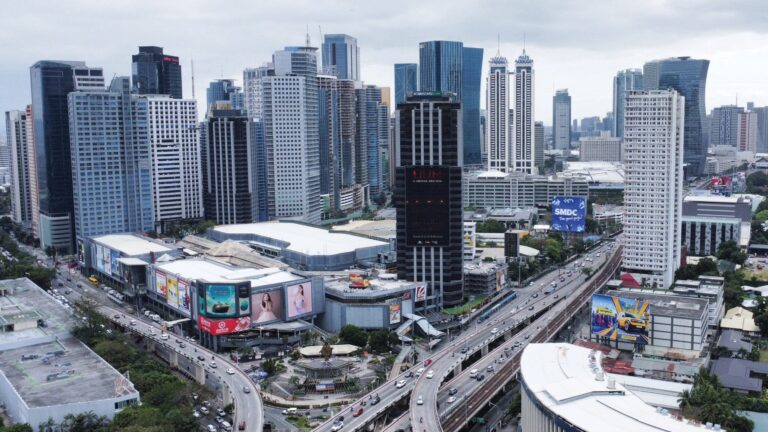The Philippine stock market began with the establishment of the Manila Stock Exchange (MSE) on Aug. 8, 1927. This was followed by the creation of the Makati Stock Exchange (MkSE) on May 27, 1963. The two eventually merged to form the current Philippine Stock Exchange in1992.The MSE was founded by five businessmen: W. Eric Little, …
The Philippine stock market began with the establishment of the Manila Stock Exchange (MSE) on Aug. 8, 1927. This was followed by the creation of the Makati Stock Exchange (MkSE) on May 27, 1963. The two eventually merged to form the current Philippine Stock Exchange in
1992.
The MSE was founded by five businessmen: W. Eric Little, Gordon W. Mackay, John J. Russell, Frank W. Wakefield, and W.P.G. Elliot.
On Oct. 26, 1936, a law was passed creating the Securities and Exchange Commission (SEC). This was in response to the need for an agency to safeguard public interest following the local stock market boom of 1936.
In 1937, the MSE introduced a ticker transmitting service. This improved the communication system for the expanding volume of transactions and allowed for the transmission of business and industry news reports from around the world. This news was sourced from Manila-based news services, including the Manila Bulletin, which was established in 1900.
As the local stock market continued to grow after World War II, the MkSE was organized in 1963 by Hermenegildo B. Reyes, Bernard Gaberman, Eduardo Ortigas, Aristeo Lat, and Miguel Campos. It began operations on Nov. 16, 1965.
With two stock exchanges and a growing number of listed companies with differing stock prices, the SEC sought to bring order. Order No. 153, dated Feb. 4, 1975, was issued to standardize price fluctuations, board lots, and trading symbols across all stock exchanges. On April 1, 1987, the MSE and MkSE agreed to use a common set of index stocks and the same calculation method.
Amid a changing technological landscape, the MSE installed a computerized real-time price reporting system in 1989. This provided members with essential market information and also supplied data to the Manila Bulletin for reporting on stock market movements.
Although both the MSE and the MkSE traded the same stocks of the same companies, they operated as separate entities for nearly 30 years. The Manila Bulletin reported that stock market investors, particularly foreign funds, were complaining about the two different prices for a single company’s stock at any given time.
This situation caused confusion for investors but created a profitable opportunity for arbitrage by stockbrokers. They would buy a stock at a lower price on one exchange and immediately sell it at a higher price on the other.
As reported by the Manila Bulletin, this was an obstacle to the development of the local capital market. The SEC decided to intervene and unify the two exchanges to establish a single price for any given stock.
This was challenging, however, due to the intense rivalry between the Binondo-based MSE and the Ayala-based MkSE. A merger was unappealing to both parties. But the SEC, as regulator, was firm in its resolve.
On Dec. 23, 1992, the MSE and MkSE issued a joint declaration on the unification of the two bourses under the PSE. This aimed to consolidate logistics and accelerate the development of the capital market.
Disagreements between members of the two exchanges continued, as the two factions could not agree on a location for their unified headquarters. MSE members wanted to accept the offer of Philippine Realty and Holdings Corporation, which proposed donating a building between the Tektite Towers in the Ortigas Central Business District.
Makati brokers preferred to stay in Makati and accept the offer of Ayala Land, which also proposed donating a building, to ensure that its Makati CBD retained the prestige of hosting the country’s stock exchange.
During this time, trading at the MSE continued through its fully computerized match trading system, the Stratus Trading System with Equicom, which started on Jan. 4, 1993. The MkSE launched its automated trading system, MakTrade, on June 15.
The SEC granted the PSE its license to operate as a securities exchange on March 4, 1994, simultaneously canceling the licenses of the MSE and MkSE.
As a compromise, the SEC allowed the PSE to have two trading floors—one in Tektite and one in Ayala. This allowed the PSE to accept both donated office buildings. On March 25, a single price market was achieved through the successful link-up of the two trading floors.
In 1996, the SEC granted the PSE temporary Self-Regulatory Organization (SRO) status. On June 29, 1998, the PSE was officially conferred SRO status. In line with this, the PSE adopted SEC policies, incorporating 42 provisions of the Revised Securities Act into its rules to discipline erring member-brokers.
To professionalize the PSE’s operations, which were still controlled and owned by stockbrokers, the Securities Regulation Code (SRC) mandated its reorganization as a stock corporation by August 2001. This was pursuant to a demutualization plan approved by the SEC.
Under this plan, stockbrokers could no longer own more than 20 percent of the PSE. This meant the PSE had to bring in new investors, and/or brokers had to divest their interests.
On Aug. 3, the PSE demutualized, transforming from a non-stock, member-governed entity into a stock, shareholder-based organization.
On Dec. 15, 2003, the PSE achieved a milestone by listing its own shares on the exchange. This made it easier to sell shares to new investors and for brokers to divest their stakes.
On Jan. 28, 2004, the PSE sold 16.5 percent (6,077,505 shares) of its authorized capital stock to strategic investors through private placement. These investors included San Miguel Corporation, PLDT, the Government Service Insurance System (GSIS), and the Social Security
System (SSS).
In 2005, the PSE implemented the Online Disclosure System (ODiSy). This provided 24/7 online access for submitting and announcing all types of disclosures. This was beneficial for stock market reporters, as all disclosures became available online, eliminating the need to obtain hard copies from the PSE offices.
The Manila Bulletin continues to report on the developments in the local capital market, which has experienced several boom-and-bust cycles. These include the initial public offering (IPO) craze of 1995-1996 before the Asian Financial Crisis, the sub-prime crisis in
the next cycle, and the pandemic crash in the latest cycle. The newspaper also monitors other stock market stakeholders, such as publicly listed companies, those planning to go public, the SEC, stockbrokers, and investors.






